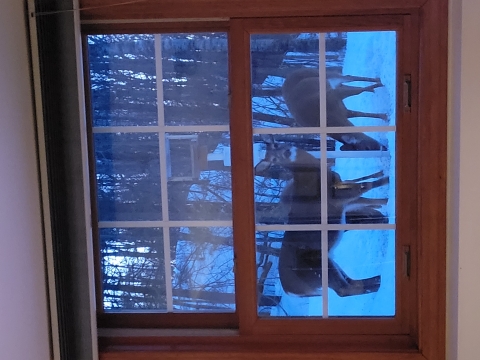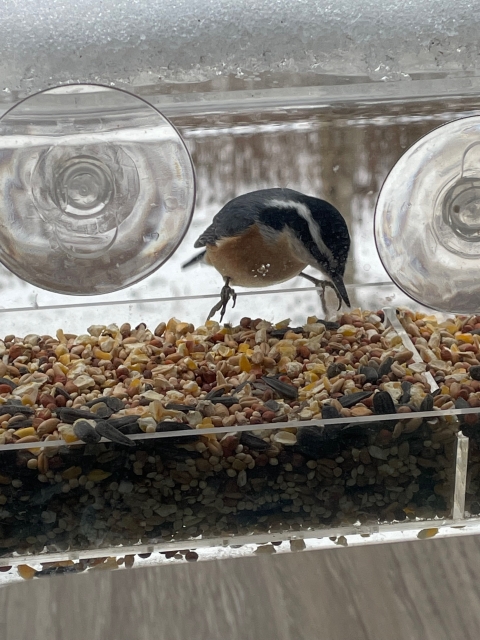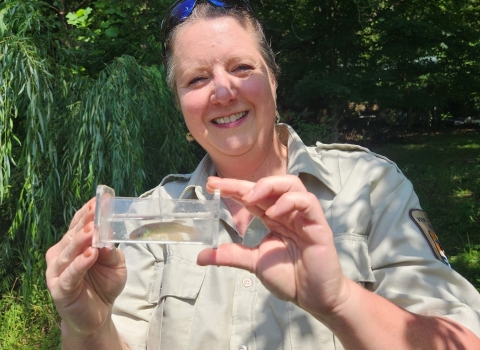What comes to mind when you think of enjoying nature? A hike in the mountains? Paddling a lake or a river? Camping in the woods? All of those certainly qualify, but they likely require planning and travel and may not be appealing when the weather is cold or wet.
What if exploring the wild could be more convenient, and even climate-controlled?
The good news is you don’t need to go far, or even outside, to discover nature and its mental health benefits. The nearest window can reveal plants and animals going about their business undisturbed and free for the viewing.
You probably have a window somewhere — home, work, your local library or coffee shop — that looks out on a tree, a patch of lawn, a garden, a field, or just the grassy strip between the sidewalk and the road. All can be stages for wildlife vignettes. Even office buildings attract birds like pigeons, hawks and falcons — a cast of characters that lends itself to gripping drama.
Once you’ve found your window on nature, it’s time to stay for a spell — try 5-10 minutes at first — and see what happens. You’ll likely start to notice things that have escaped your attention before. You might see a bird land in a tree or on a window ledge or telephone wire. You may spot a flower poking up between sidewalk pavers. You could witness squirrels squabbling over a discarded delicacy.
Simply observing quietly can bestow benefits, including reduced stress, increased concentration, improved mood and greater compassion, according to the American Psychological Society. If you want to take it up a notch, you can record what you see in writing or drawings. Be scientific, or be creative. A field guide from your library can help with naming what you see, and the free iNaturalist and Merlin apps make it even easier.
Return to your window once a day, once a week, or once a month. Activity can vary depending on time-of-day and season. If you make this a long-term project, you can create a phenology — a record of natural events throughout the year — for your location.
You may decide to put out the welcome mat. Attract songbirds by installing a window bird feeder. Come spring, plant a window box of annual flowers like asters, marigolds, zinnias, salvia and petunias. Pollinators like hummingbirds, butterflies and bees will thank you, and you’ll have more to watch and enjoy!
Striking out in the window department? We’ve got you covered. Check out one of our remote wildlife cameras. They’re focused on bald eagle and osprey nests, but you never know who might show up.
- Blackwater National Wildlife Refuge (Maryland) Osprey Cam
- National Conservation Training Center (West Virginia) Eagle Cam
- Masonville Cove (Maryland) Eagle Cam
While there’s no substitute for the great outdoors, sometimes it just isn't handy. That’s no reason to miss out on the beauty and benefits of nature. With a little reframing, wildlife can come into view anywhere.







